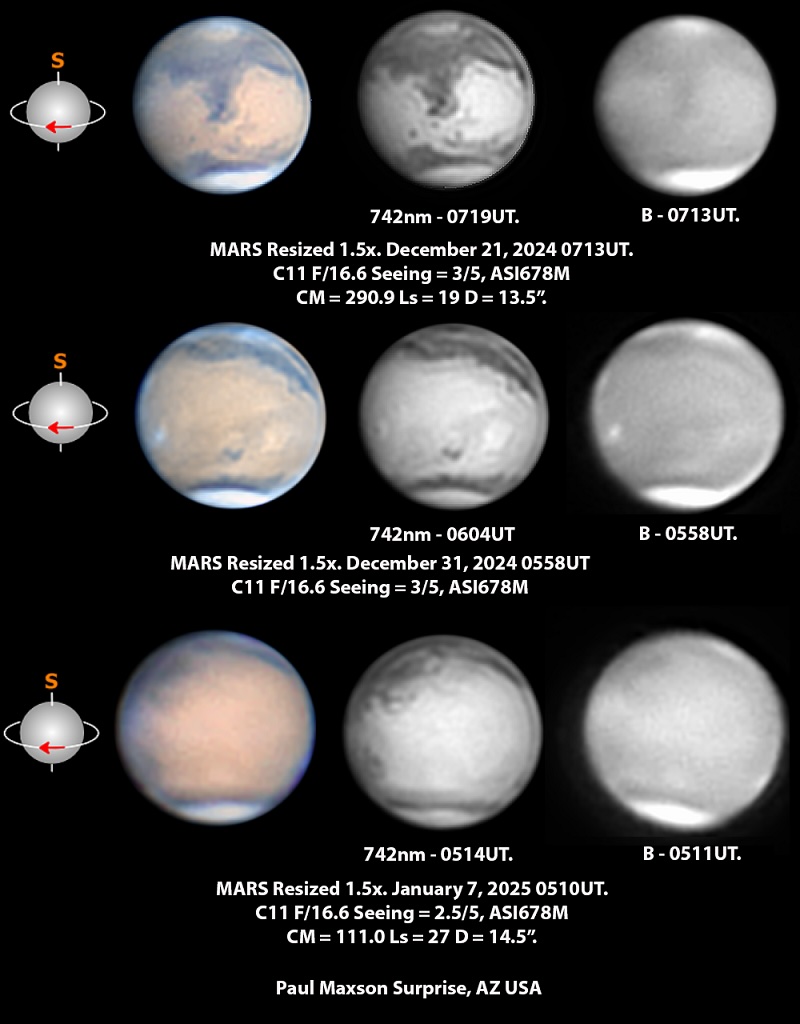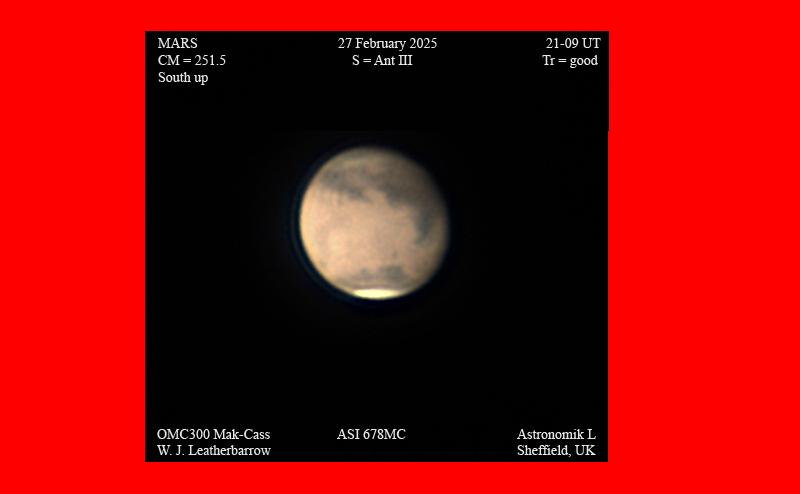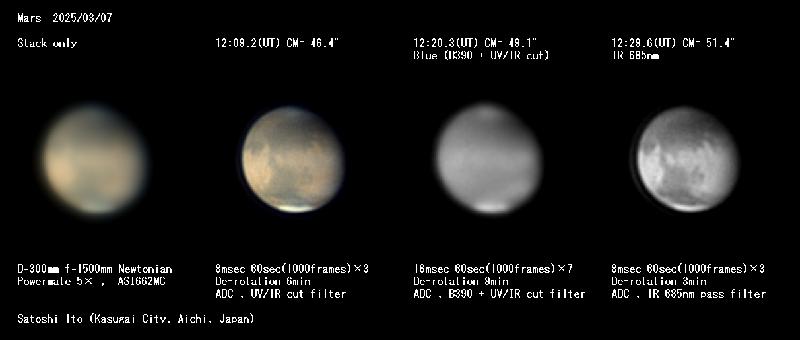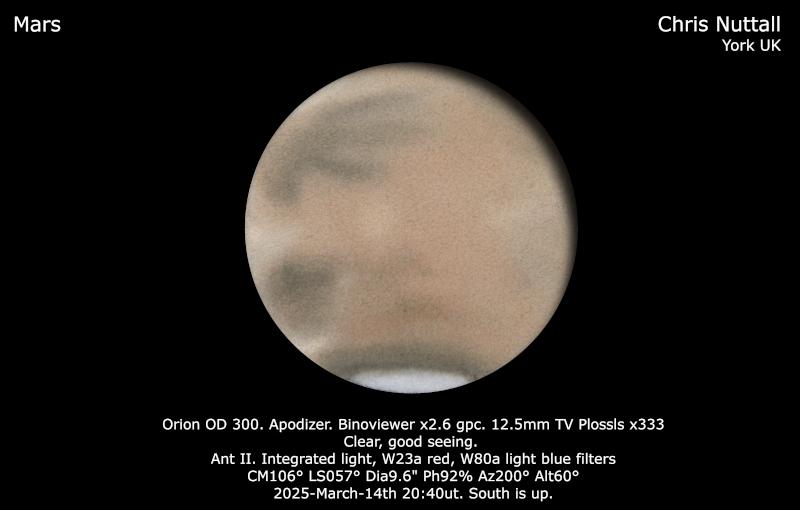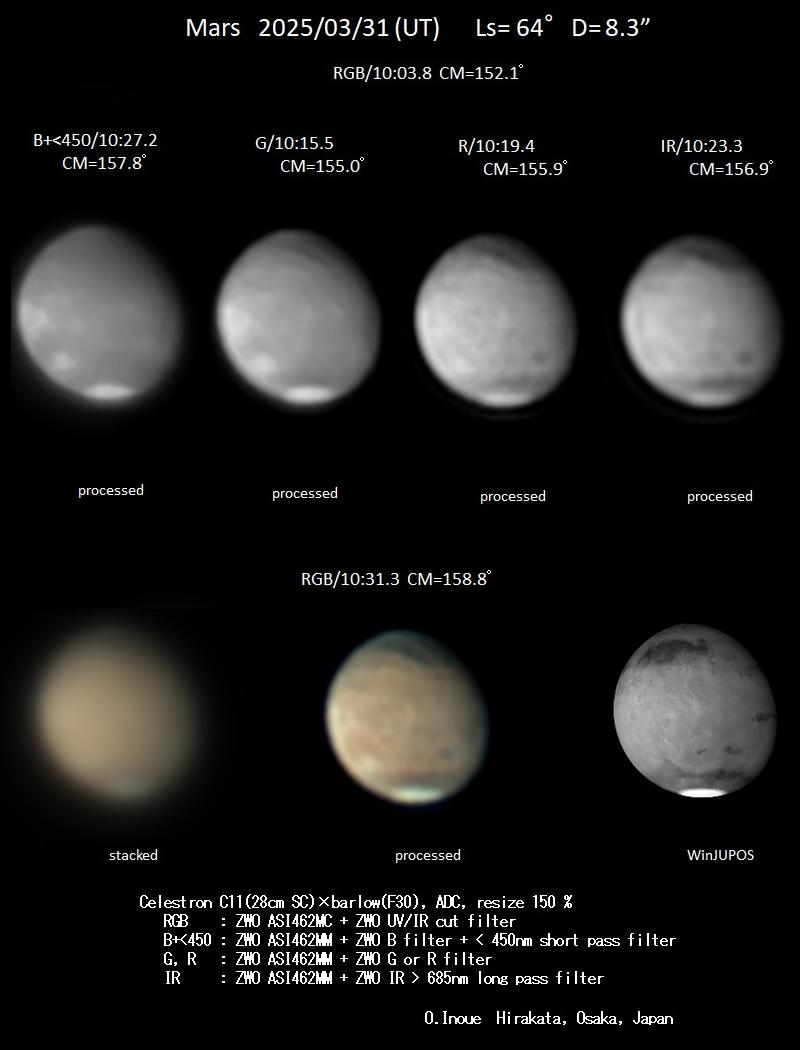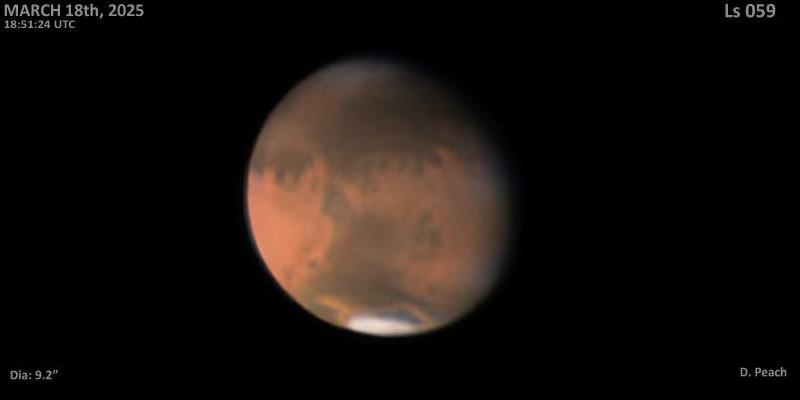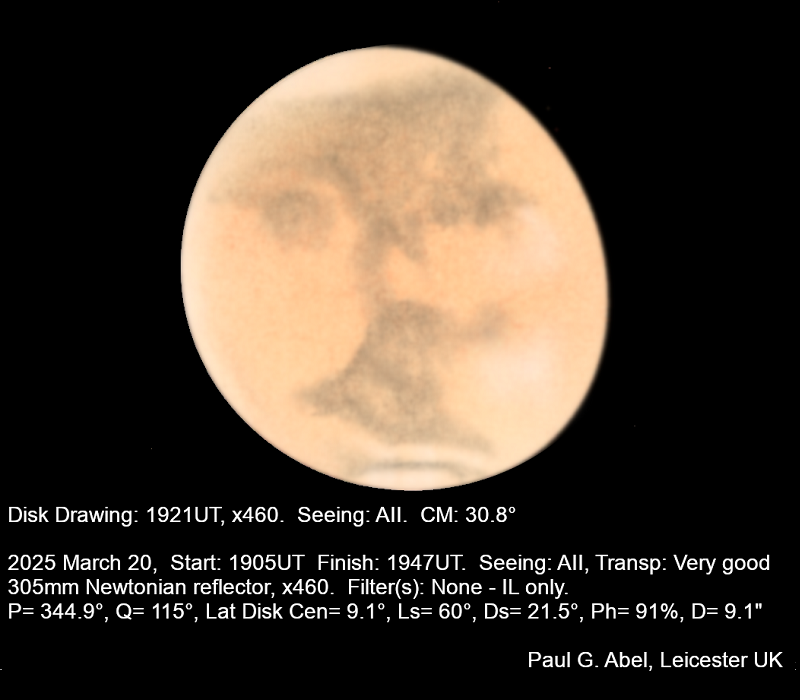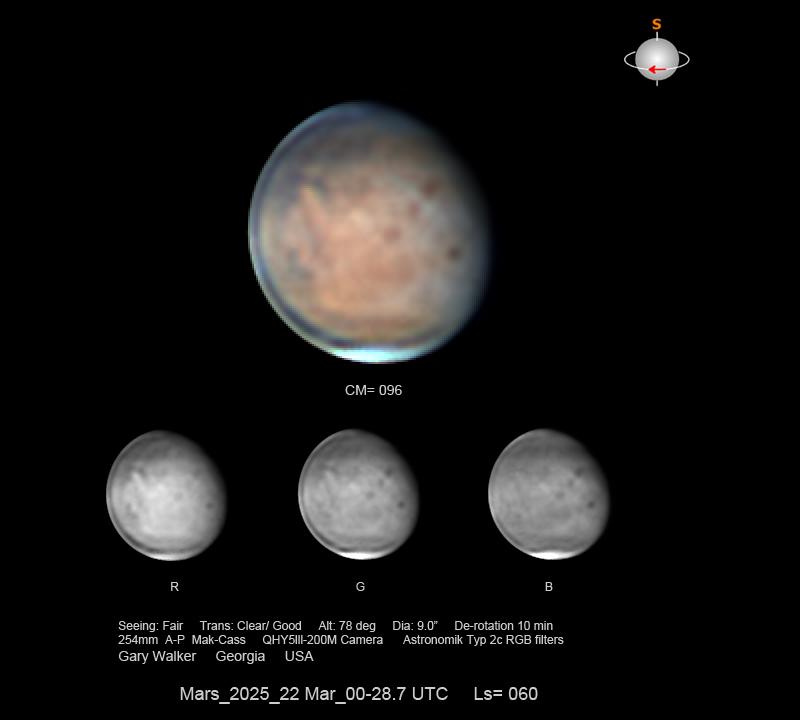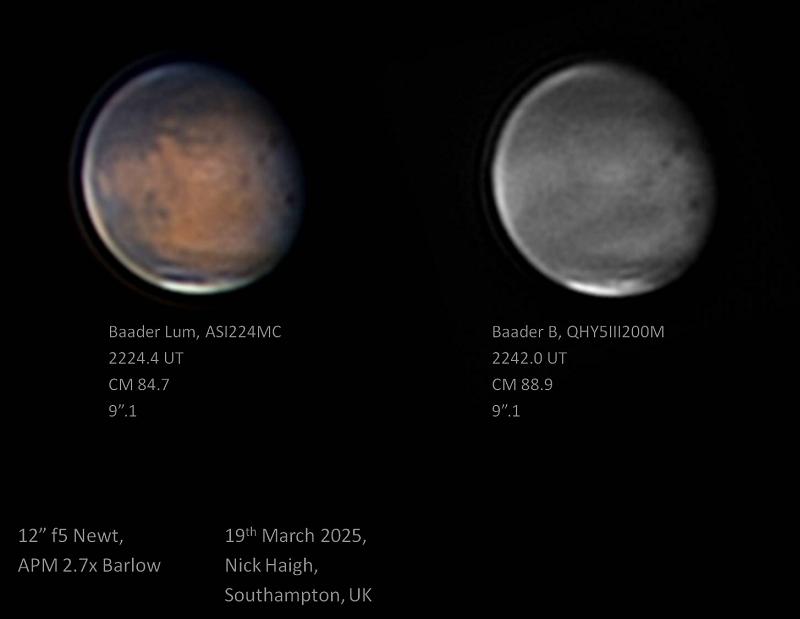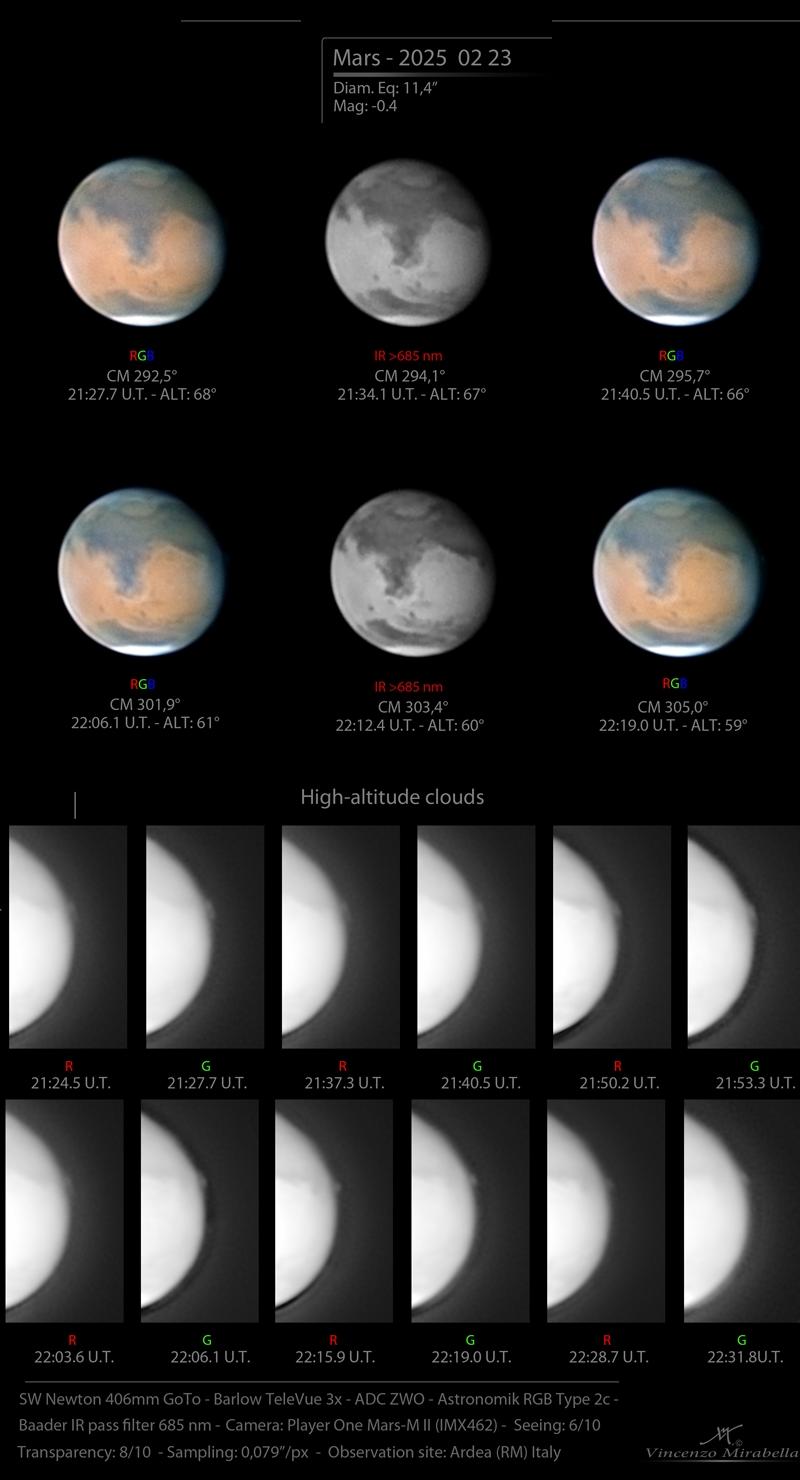2025 April 10
Mars Opposition Blog 10 April 2025
April 10th 2025
As Mars rapidly diminishes in size, I am starting with some earlier images by P.W.Maxson (USA) to remind us of the near-opposition period.
Moving ahead in time, an image on Feb 27 by W.J.Leatherbarrow (UK) shows the planet beautifully defined at the moment of our last update. But at the time of writing (April 7), the disk diameter has recently dipped below 8 arcseconds. To partially compensate, we have at least had an exceptionally long run of clear evenings in the UK, and sometimes even some decent seeing. As always, this update is not intended to be a complete analysis.
The south polar hood is now more prominent. Hellas is quite brightened by its presence but is not yet brilliantly white; so, white clouds rather than frost are present there. The equatorial cloud belt (ECB) has been well seen, and when cutting across the Syrtis Major has imparted to it an obvious blue tint. The same tint is imparted to northern Mare Tyrrhenum. Although obvious visually, it is not evident in all the images received, which suggests a lack of proper colour balance. The Mar 7 image by S.Ito (Japan) nicely shows the enhanced brightness along the equator (and the enhanced polar hood) in blue light., while the evening clouds drawn by C.Nuttall (UK) for Mar 14 are typical.
The orographic clouds over Elysium Mons, Olympus Mons, Alba Patera and the Tharsis Montes can still be caught right at the evening limb, but there it is only early afternoon in terms of local time, so those clouds have not yet displayed the brightness that they would do at the evening terminator. See M.R.Lewis’s (UK) Mar 3 image and O.Inoue’s (Japan) of Mar 31.
The NPC continues to shrink, and as of late no detail has been seen within it. But do please look for the detachment of Olympia soon, due to the development of the dark Rima Borealis rift.
There were no surface feature changes, but there has been a little dust activity. The image of M.R.Lewis for Mar 3 (and another of his for Mar 9 at the same spot) suggests some atmospheric activity at the cap edge. On Mar 20 D.A.Peach (UK) imaged two small bright yellow dust clouds at the edge of the cap near Mare Acidalium. His image is posted here. On the same date P.G.Abel (UK) visually saw that there was a light strip between N. Mare Acidalium and the cap edge, and wrote: “Sometimes in the best moments of seeing the brightness took on an orange tone like those of dust clouds.” See his drawing posted here. Abel, F.J.Melillo (USA) and the Director commented that central and southern Mare Acidalium sometimes looked a little fainter than usual, though this must have been due to the slight veiling effect by the ECB (mentioned above, and now close to its seasonal maximum thickness), that crosses part of Mare Acidalium.
The often extensive morning cloud continued to offer the opportunity of catching the summits of the Montes poking through it, and so looking dark by contrast. Despite the small disk the Director was pleased to catch this effect again on Mar 18 (410 mm DK Cass., x410). An image for Mar 22 by G.Walker (USA) is posted. A similar UK view on Mar 19 is provided by N.J.Haigh. In passing, looking at such images forcibly reminds the writer of the observation by J.E.Mellish, around the time of WW1, when with the Yerkes 40-inch OG he claimed to have seen ‘craters’. Could this be what he actually saw? Such an eyepiece view would have been striking and suggestive with a large aperture. But visual observers never explicitly saw this effect before the 1990s, for it requires a large phase defect (and hence a small disk) together with seasonal morning cloud, and it was only rarely suggested in the old photos. (Was it another instance of the “Elephant in the Room’? Something the old observers obviously saw, but didn’t want to see.)
Massimo Giuntoli kindly drew my attention to Italian observations of another terminator projection, this time by P.De Gregorio, V.Mirabella and R.Sedrani for Feb 20-23. With the CM around 300 degrees and hence the Syrtis Major central, a detached cloud is visible near the equator in the longitude of Aram (Thymiamata), just W. of Meridiani Sinus. I have uploaded the results by Mirabella for Feb 23, which include a suitably brightened strip of sequential images. (I have edited out and rearranged parts of the image to keep it to 800 pixels wide.)
A number of new observers brings the total to 88. Can we make it 100? We continue to maintain a round the clock Marswatch, with no days missed.
I will make at least one more update to this blog later, so keep observing and sending your results please. Good observing!
| The British Astronomical Association supports amateur astronomers around the UK and the rest of the world. Find out more about the BAA or join us. |

